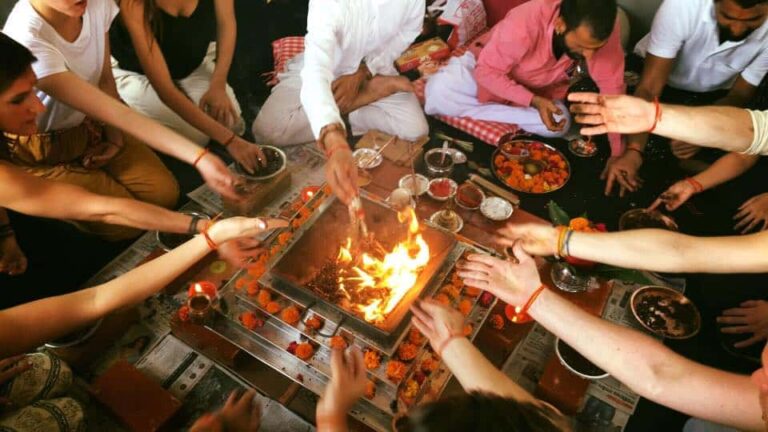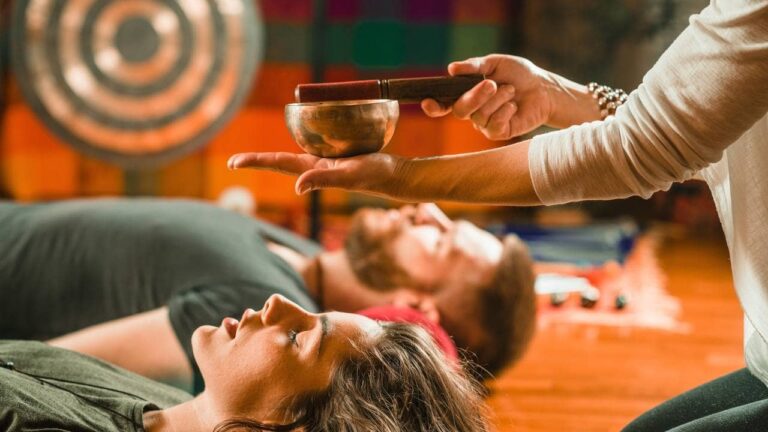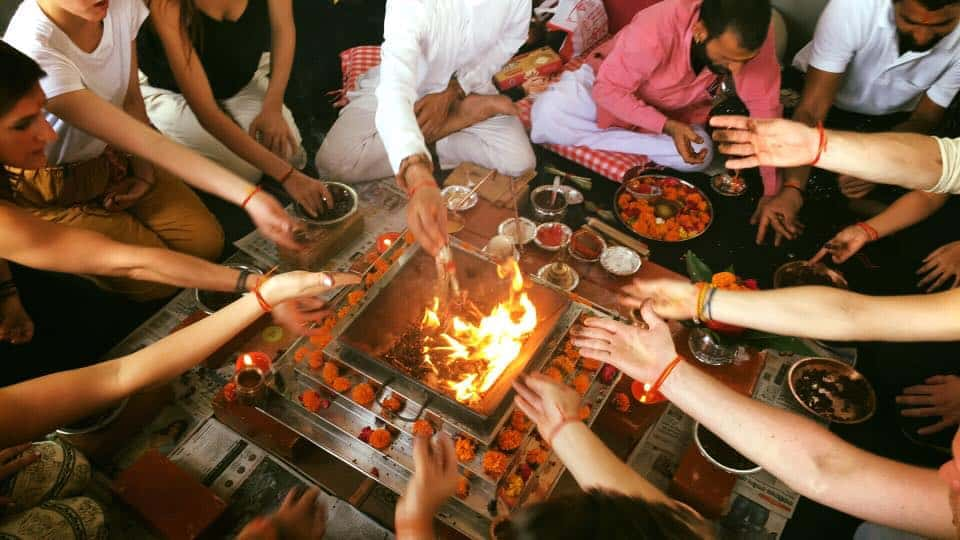
Yoga
In the yogic culture, Lord Shiva as the first Adi Guru, first Yogi & First Yoga Teacher, Who invent Yoga as first by his dancing & Deep mediation.
Shiva explained various types of yoga , The first student of Shiva’s teaching was to God Parvati, his wife. In great detail, and in very gentle ways, Shiva expounded the ways of yoga to Devi.
The yoga sutras of Shiva are such that almost in every sutra, he refers to her as the resplendent one, the gracious one, the beautiful one & The second set of yogic teaching was expounded to the Sapta Rishis( first seven sages).
The meaning of Yoga?
The term ‘Yoga’ is derived from the Sanskrit word ‘Yuj’ which means ‘union’. Thus Yoga signifies the union of one’s consciousness with the supreme consciousness. The subtle effects that result from, yoga Sadhana brings about perfect harmony between one’s body and mind. The ultimate point is reached in yogic practice when one feels liberated which is one attains a state of nirvana or mukti. It is the state of self-realization that brings peace, health, and harmony in one’s life. Yoga is a culture in itself that brings about spiritual upliftment. A state of equanimity is reached when one develops the ability to control one’s body and mind while practicing yoga.
Yoga is a science in which hatha yoga and asanas prepare an individual’s body to sustain higher levels of energy and then next in the process comes control of breath, the mind, and the inner self. It is used, at times, as a therapy for the bodily ailments and the ailments of the mind bringing about the health and fitness of an individual. Yogis believe that yoga is not related to any religion or community as such but is a science of inner wellbeing meant for global humanity.
In India, there are different traditional schools of yoga whose approaches are different yet they all strive to achieve the ultimate goal of yoga. Few of the traditional schools are kundalini yoga, karma yoga, bhakti yoga, dhyana yoga, jnana yoga, hatha yoga, raja yoga, mantra yoga, etc. To attain the goal of yoga one must undertake to practice Yama, niyama, asana, pranayama, pratyahara, Dharana, dhyana (meditation), samadhi, bandhas & mudras, shat-karmas, yukata-ahara, yukata karma, etc. Stability of mind and body is achieved as one acquires the ability to maintain one’s evolved awareness for a considerable period of time. Four fundamental paths to follow by a yoga Sadhak are karma yoga that works at the level of his body, bhakti yoga that works at the level of his emotions, jnana yoga that works at the level of his mind, and finally the kriya yoga that works at the level of his energy.
The rituals and customs in India are a result of inclination towards yoga that has bred among Indian’s a compassionate outlook towards all God’s creations.
How Yoga Originated/ History of Yoga ?
Pieces of evidence are there that easily prompts one to conclude that yoga developed and existed in ancient India. Excavations of the ancient Indus Valley Civilisation(3300 BC – 1300 BC) sites have secured several seals & fossil remains with Yogic motifs & figures performing yoga, suggesting the presence of yoga in the period of this ancient civilization. In the chronology of events, this was the Pre-Vedic period when the suggested origins are even found in the eastern Indian states of Bihar, West Bengal, Odisha, and Jharkhand.
Vedic period in India is marked between 1700 BC to 500 BC but the period from 500 BC to 800 AD is considered the most important and a prominent period as far as the development of yoga is concerned. Vedic ascetic practices culminated in the development of yoga as a systematic concept. Vyasa Rishi on yoga Sutras did increase the significance of many folds. Early yogic descriptions are available in Mahabharata and Bhagavat Gita. Early references are also there in Rig Vedaand Upanishads. The post-Vedic period saw Yoga Sadhana being revealed in the teachings of Buddhism and Jainism. Patanjali yoga sutras depict various aspects of yoga. The period from 800 AD to 1700 AD saw the contributions through the teachings of Adi Shankaracharya, Ramanujacharya. Hath Yoga was made popular by the Natha Yogis. The modern period saw the development of Raja Yoga by great Yogacharyas such as Ramakrishna Paramhansa, Vivekananda, etc.
Today yoga finds an important place in the life of the Indians solely for the maintenance of their physical and mental health.
How is Yoga related to India?
Yoga involves practices that involve physical mental and spiritual aspects of the human being. There are specific breathing techniques that help achieve the goals of yoga. Yoga took birth in ancient times in India and soon became a way of life in the country. It signifies Hindu philosophical traditions that are deep-rooted in Indian society. Yoga thus is a culture and heritage of India Yogsaadhna brings the harmony of body of mind and breath.
Yoga in India was born when the Hindu belief systems came into existence, somewhere with the dawn of civilization. Hindus believe Shiva to be the Adiyogi, who several thousand years ago transferred his sacred knowledge to Saptarishis who in turn carried this knowledge of yogic science all over the world. Close parallels have been revealed in this regard among the ancient global cultures that establish a strong belief in the legend. Agastya Muni one among the saptarishis, introduced yogic life across the Indian subcontinent. Yoga Gurus, from ancient times to this date have not only preserved and promoted yoga but also have developed and adapted it to cater to the modern lifestyles of individuals not forgetting in the process to keep the traditional discipline for maximum benefit.
The truth, the depth that this ancient science encapsulates can only be understood in India and nowhere else in the world. Sooner or later it is ultimately the destination India where a seeker will be able to understand the spiritual aspect of yoga. The world has instantly taken to Hatha Yoga and Asanas from India and these are being practiced widely for health and fitness, but the spiritual upliftment aspect of yoga that culminates into oneness with the supreme consciousness is the yoga that helps attain freedom or mukti or nirvana or moksha or a state of liberalization.
India is thus not only the birthplace of yoga but also a most sought after yoga tourism destination. A large number of retreats, yoga schools, ashrams, resorts, yoga teacher training centers are available all over India. India Ministry of Tourism and the Ministry of Ayush are also promoting India as a “Yoga Tourism hub”.
Yoga Packages

Elevate Your Soul: Yoga, Vedic Yagya, and Spirituality
04 Nights/ 05 Days

Yoga and Ayurveda: The Art of Living Well
04 Nights/ 05 Days

Yoga: Connecting the Inner Self to the Spiritual Universe
04 Nights/ 05 Days







